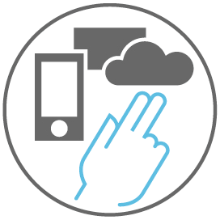Pervasive simulation envisions people making use of simulation technology in their private and professional lives, anytime, anywhere. Mobile devices, such as tablets and mixed-reality equipment, allow users to interact with simulations in real time. Visualizing simulation output at interactive rates and allowing users to give immediate feedback to control the simulation open the door for many novel applications, in particular, in all three of our Visionary Examples. With the increasing diversification of computing platforms, ranging from mobile devices to the cloud to HPC, pervasive simulation systems must be executed in a highly heterogeneous communication and computation infrastructure. Moreover, they must incorporate data from physiological sensors, wearable devices, or other sources, and support complex real-time interactive visualization.
Due to the human-in-the-loop nature and seamless support of user mobility, pervasive simulation poses unique requirements that reach far beyond the state of the art. We aim to achieve powerful abstractions that will allow for a simple specification of complex simulation systems and to develop methods for automatically distributing, deploying, and adapting simulation systems in an optimal manner. These methods rest on techniques that trace simulations (their modeling, deployment, execution, and adaptation) using provenance data of the simulation process. This traceability supports adaptive behavior as well as reproducibility of simulation results in dynamic environments. To actively engage the user in human-in-the-loop pervasive simulations, appropriate paradigms for visualization and interaction are required.
Research questions
RQ 1 Modeling, adapting, and deploying pervasive simulations: How can we model a pervasive simulation in a modular, portable, and reusable manner such that the simulation system will be automatically adapted to the requirements of a dynamic environment and deployed in a heterogeneous infrastructure?
RQ 2 Traceability: How can we model, collect, and leverage provenance to ensure the traceability of parameterizations, computations, and data while complying with efficiency requirements?
RQ 3 Adaptive interaction and pervasive visualization: How can we model user performance in real time to adapt interactive visualization systems to users and the environment, supporting mobile interfaces and immersion in augmented and virtual reality?
Ongoing projects
Completed projects
Ongoing associated projects
Completed associated projects
Project Network Coordinator

Michael Sedlmair
Prof. Dr.Virtual Reality and Augmented Reality I SimTech Equal Opportunity and Diversity Officer and Deputy Diversity Officer
[Image: SimTech/Max Kovalenko]

Jörg Fehr
apl.-Prof. Dr.-Ing.Engineering and Computational Mechanics | Committee for Knowledge Transfer
[Image: SimTech/Max Kovalenko]



